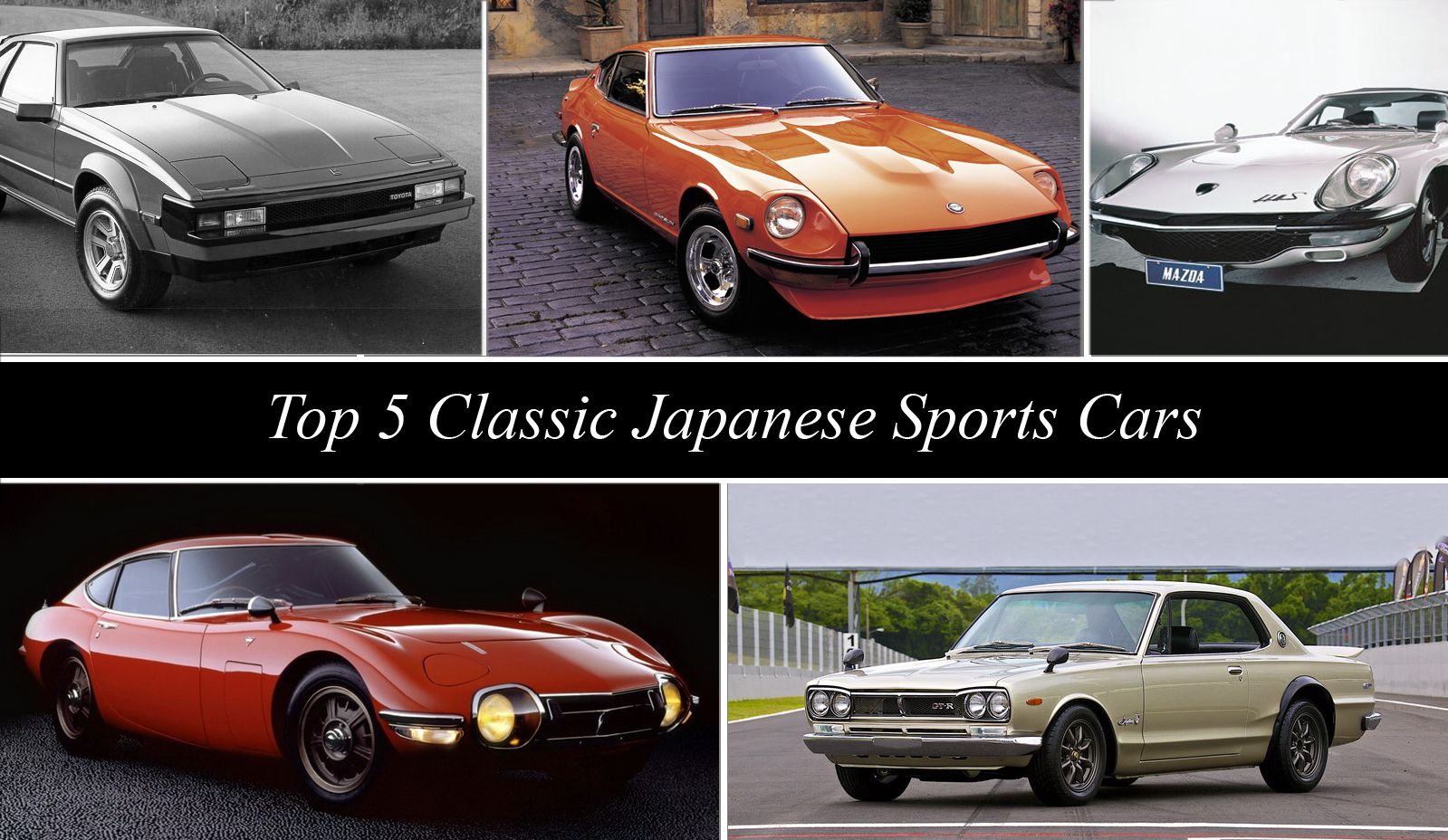Most folks don’t get it, but enthusiasts will understand. Sometimes, there’s a car that’s so memorable, so special, and so evocative, that just looking at it will transport you to another place and time. Maybe you first saw it in a magazine, or maybe it was bootlegged videocassette. Maybe you heard it blast by at full throttle at some far-flung car show. Maybe someone close to you let you sit in the driver’s seat. However or wherever, the memories are there, and while most associate the collector car market with muscle cars and old Ferraris, the past decade or so has shown steadily growing interest in sheet metal wrought in the Land of the Rising Sun.
But this article isn’t about auction prices or market shifts. This article is about five of the greatest classic Japanese sports cars ever produced. Choosing just five examples was tough, but hey, that’s why we get paid the big bucks.
Keep reading, and let us know which of these rides get your juices flowing.
Continue reading to learn more about TopSpeed’s Top 5 Classic Japanese Sports Cars.
Number 5 – Toyota Celica Supra
Although it may be the youngest entry on this list, the Toyota Celica Supra is still quite deserving of its Top 5 spot. First introduced in 1979, the original Celica Supra is a fastback coupe made from plenty of angles and hard creases. Toyota doubled down on the aesthetic for the second generation, which arrived in 1981.
The look is definitely a love-it-or-leave-it proposition, but the stuff underneath was never in doubt. Making the go in the first-gen is a 2.6-liter inline six-cylinder engine, the very first production powerplant that Toyota offered with electronic fuel ignition. Turning it is a four-wheel independent suspension, while four-wheel discs make it stop.
While a bit slow by modern standards, this thing provided the baseline that eventually evolved into icons like the twin-turbo Mk. 4 Supra – not to mention, the recently spied fifth generation.
Read the full review here.
Number 4 – Mazda Cosmo
Mazda is proud of its rotary-powered heritage, and rightfully so. It takes a lot of guts to break from the herd, especially when it comes to something as fundamental as engine design. But break away Mazda did, and this is the machine that did it.
First put into full production in 1967, the Cosmo took its name from the space race that raged at the time of its birth. But the name fit – not only did the two-door coupe offer a wildly eccentric piece of design, it also came equipped with a novel dual-rotor Wankel engine, a first for its day.
While technically small in the displacement department, the triangle-powered Cosmo still offered a lot of squirt. Paired with a relatively feathery curb weight and ground-hugging center of gravity, Mazda took the Cosmo racing across Japan and in Europe.
Competition success varied, but Mazda stuck with the rotary design, and eventually, used it to great effect in cars like the FD RX-7.
Read the full review here.
Number 3 – Nissan 240 Z
If ever there was a cult classic Japanese sports car, the 240 Z is it. Also known as the Fairlady, the first-ever Z car left the factory in 1970 and immediately captured the hearts of enthusiasts the world over. Z devotees will acknowledge Yutaka Katayama (a.k.a., Mr. K) as the driving force behind the Z’s arrival stateside, not to mention it’s subsequent commercial success in the U.S.
At the outset, the Z came packing with a 2.4-liter inline six-cylinder engine pumping out 150 horsepower at the rear axle. The suspension is independent at all four corners, and there are disc brakes in front.
Not only is this thing a sight to behold, its fast too, taking wins in SCCA, IMSA, and even the World Rally Championship.
Read the full review here.
Number 2 – Nissan Skyline GT-R Hakosuka
Everyone knows about the high-tech AWD boosted beefiness that is the modern Nissan GT-R, but not everyone knows about Godzilla’s grandpa – the original Hakosuka GT-R.
The name comes from a combination of the Japanese words for box (hako) and skyline (suka), but the real story behind this speed square is on the race track. Packing 160 horsepower and 131 pound-feet of torque from a six-cylinder capable of revving to stratospheric 7,500 rpm, the Hakosuka managed to become one of the most dominant sports cars in Japanese motorsport history. It was a tradition that would continue for some time into the future, with subsequent generations going on to collect an overwhelming number of victories in series like the Group A Touring Car Championships of the ‘90s.
Read the full review here.
Number 1 – Toyota 2000 GT
One word – stunning. Only about 350 examples of the Toyota 2000 GT were built, but during its short production run between 1967 and 1970, this lithe little fastback managed to change the world’s perception of what a Japanese sports car is supposed to be.
Every angle is dripping with style, while the interior is decked out in opulent luxury. Under that shapely hood line, you’ll find a 2.0-liter inline six-cylinder engine, which was modified by Yamaha to produce 150 horsepower. While rare at 350 units, Toyota also made nine examples with a larger, 2.3-liter six-cylinder engine.
The car even has some competition success to its name, taking the checkered at the Fuji 24-Hour Endurance Race in 1967. Top speed is rated at around 135 mph.
These days, it seems as though the 2000 GT is finally getting the recognition it deserves, with some examples selling for more than a million dollars at auction.
Read the full review here.

